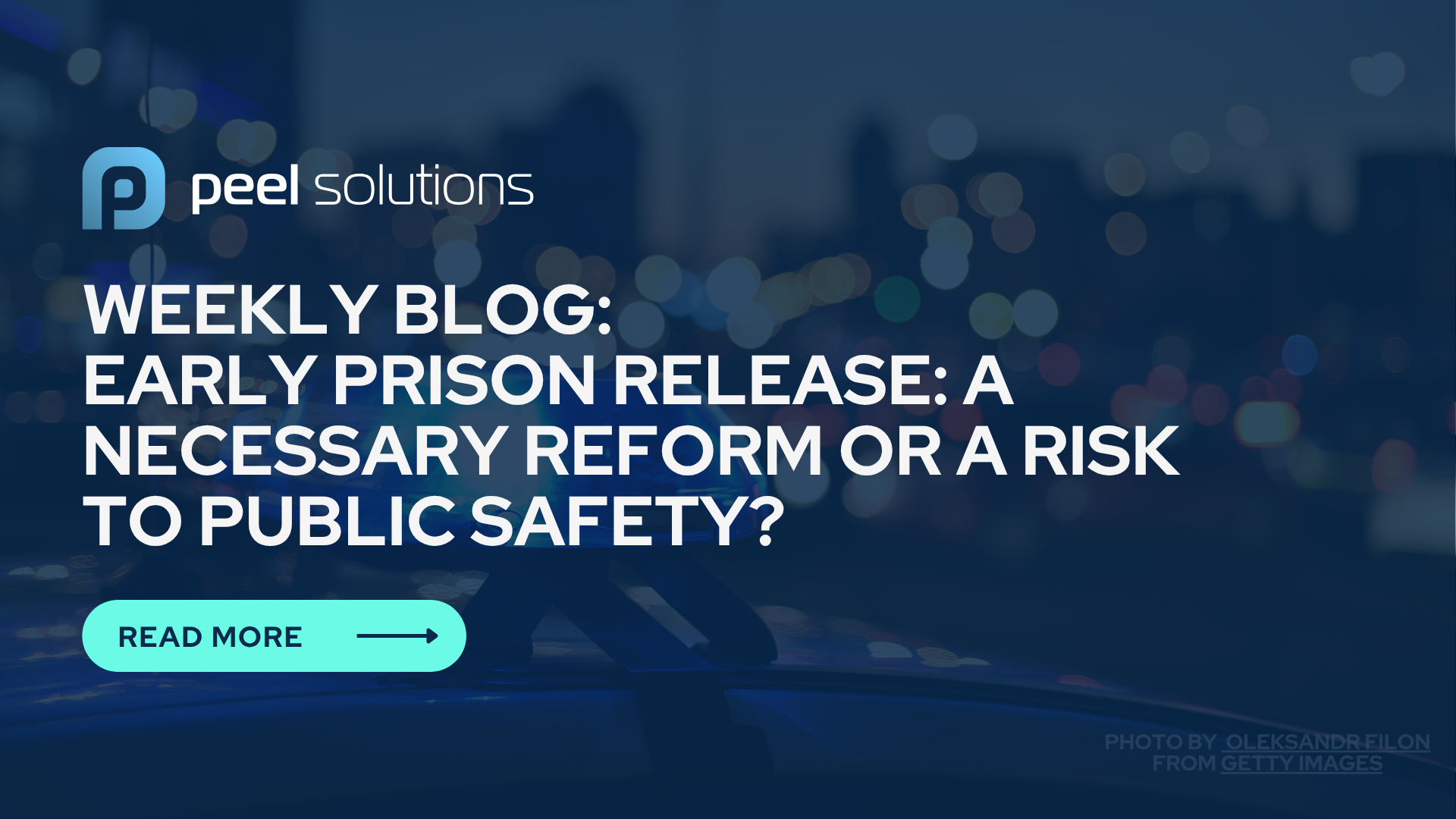Early Prison Release: A Necessary Reform or a Risk to Public Safety?
The UK's criminal justice system is currently grappling with a profound challenge: a prison estate stretched to its limits. Adult male prisons are reportedly operating at 99% capacity, with stark projections indicating that available spaces could run out entirely by November 2025. This critical situation has spurred a re-evaluation of sentencing and offender management, bringing proposals for early prisoner release to the forefront of national discussion. However, these measures, aimed at alleviating the immediate crisis, have ignited a crucial debate: are they a necessary reform to a burdened system, or do they pose an unacceptable risk to public safety?
The Overcrowding Crucible: A System Under Strain
The current predicament is not a sudden crisis but the culmination of long-term trends. The prison population has surged by approximately 30% since 1993, a period marked by chronic underinvestment in both prison infrastructure and probation services. This sustained pressure has led to a situation where the system is struggling to cope, prompting emergency measures in the past, such as the early release of around 1,700 prisoners in 2024, which ultimately failed to resolve the underlying capacity issues.
In response to this escalating challenge, the government commissioned the Independent Sentencing Review. Led by former Justice Secretary David Gauke, the review was tasked with a comprehensive re-evaluation of the UK’s sentencing framework. Its recommendations, published in May 2025, aim to reduce the prison population by approximately 9,800 places by 2028, primarily by reducing reliance on custodial sentences and promoting rehabilitation in the community. It is within this context that the controversial proposals for earlier release have emerged.
Unpacking the Proposals: The "Earned Progression Model"
At the heart of the proposed reforms is an "earned progression model." This system would allow some offenders, including those convicted of serious violent and sexual offences, to become eligible for release after serving between one-third and one-half of their sentences, provided they demonstrate good behaviour and engage with rehabilitation schemes. The government contends that these reforms are essential to prevent a complete breakdown of the prison system, a scenario that could force courts to suspend trials and police to halt arrests. Justice Secretary Shabana Mahmood has emphasised that released offenders would be subject to "intensive supervision," supported by a significant £700 million investment in probation services and electronic tagging.
The stated aims are twofold:
- Alleviate Prison Overcrowding: To create much-needed capacity within the prison estate.
- Incentivise Rehabilitation: To encourage positive behaviour and engagement with rehabilitative programmes among prisoners. However, the prospect of earlier release for certain categories of offenders has understandably raised significant concerns.
Police Chiefs Sound the Alarm: Public Safety at the Forefront
The National Police Chiefs' Council (NPCC) has been vocal in its apprehension, urging the government to exempt "high-risk" violent and sexual offenders from any early release schemes. Chief Constable Sacha Hatchett, the NPCC's lead for criminal justice, articulated this concern directly: "Out of prison should not mean out of control... We need adequate funding for probation and electronic monitoring to manage risks."
The core anxieties for police leaders revolve around:
- Increased Risk of Reoffending: The potential for individuals who still pose a threat to public safety to be released prematurely.
- Strain on Policing Resources: The additional burden that managing a larger cohort of released offenders, some with complex needs, could place on already stretched police forces.
- Victim Confidence: The impact that such releases might have on the trust victims place in the justice system.
Police sources have highlighted that while the pressures on the prison system are understood, the potential impact on policing and public safety may not be fully appreciated at this stage. The NPCC estimates a need for substantial additional funding for the probation service to adequately supervise those released early.
Broader Implications: Victims, Probation, and Public Trust
The debate extends beyond operational policing. Victim advocacy groups have expressed deep unease. Dame Nicole Jacobs, the Domestic Abuse Commissioner for England and Wales, warned that the early release of domestic abusers could "send a clear message to domestic abusers that they can now offend with little consequence." This sentiment underscores a critical aspect of the discussion: the potential re-traumatisation of victims and the erosion of their confidence in the justice system’s ability to protect them.
The probation service, tasked with supervising released offenders, is another focal point of concern. Reports indicate that probation officers are already managing heavy caseloads, with a significant proportion of the workforce having less experience than in previous years (25% less experience than in 2012, according to some sources). The prospect of an influx of offenders, including those with a history of violent or sexual crimes, needing intensive supervision raises serious questions about the service's capacity to cope effectively, even with the promised additional funding. The current proven reoffending rate for adult offenders stands at 27.5%, and there are concerns that without robust, well-resourced supervision, this figure could rise.
A Difficult Balancing Act: Reform vs. Risk
The situation presents a formidable challenge for policymakers. On one hand, the crisis in prison capacity is undeniable and demands innovative solutions to prevent systemic collapse. Proponents of reform, including David Gauke, argue that an over-reliance on short custodial sentences is often ineffective in reducing reoffending and that community-based rehabilitation can offer a more constructive path.
On the other hand, the duty to protect the public is paramount. The warnings from police chiefs and victim advocates cannot be dismissed lightly. The potential for even a small number of high-risk individuals to reoffend after early release carries severe consequences. As opposition MPs have framed it, there's a fear of "handing criminals a get-out-of-jail-free card" which could lead to an increase in crime.
The path forward requires a meticulous weighing of these competing concerns. It involves not only considering the mechanics of release but also ensuring that the entire criminal justice ecosystem – from policing to probation to victim support services – is adequately resourced and prepared for the potential ramifications.
The debate over early prison release is more than a question of logistics or prison numbers; it strikes at the heart of how we as a society balance punishment, rehabilitation, and the fundamental right to public safety. As these proposals move forward, the perspectives of those on the front lines of law enforcement and those who support victims will be crucial in shaping a response that is both pragmatic and principled. The challenge for UK policing and the wider justice system is to navigate this complex terrain, ensuring that any reforms undertaken genuinely contribute to a safer society for all.
To understand more about the context of prison capacity, you can read our previous blog: The UK Prison Capacity Crisis: The UK Government’s Response.
Sources:
- https://www.telegraph.co.uk/news/2025/05/23/police-chiefs-speak-out-early-release-violent-prisioners
- https://www.itv.com/news/2025-05-22/chemical-castration-and-early-release-of-some-domestic-abusers-to-be-introduced
- https://assets.publishing.service.gov.uk/media/682d8d995ba51be7c0f45371/independent-sentencing-review-report-part_2.pdf
- https://www.bbc.co.uk/news/articles/cql22xwg62vo
- https://hansard.parliament.uk/commons/2025-05-22/debates/A8FD73FC-8365-4C86-9486-F22F6C175877/IndependentSentencingReview
- https://www.gov.uk/government/news/landmark-sentencing-reforms-to-ensure-prisons-never-run-out-of-space-again
- https://news.sky.com/story/sex-offenders-could-face-chemical-castration-under-plans-in-sentencing-review-13372405
- https://www.endviolenceagainstwomen.org.uk/statement-on-the-independent-sentencing-review/
- https://www.yahoo.com/news/don-t-release-violent-offenders-121456850.html
- https://www.itv.com/news/2025-05-21/government-to-be-told-to-scrap-short-prison-sentences
- https://www.independent.co.uk/news/uk/home-news/independent-sentencing-review-prison-evidence-b2756657.html
- https://www.lawsociety.org.uk/topics/blogs/westminster-update-new-prison-capacity-measures
- https://www.telegraph.co.uk/news/2025/05/23/labour-plans-40000-criminals-get-out-of-jail-free-card/
- https://assets.publishing.service.gov.uk/media/682f19117fb7a7d9cd7751ef/PSPRB_24th_Report_2025_Web_accessible.pdf
- https://www.bbc.com/news/videos/cp3qgyp597yo
- https://www.westmercia-pcc.gov.uk/pcc-responds-to-the-independent-sentencing-review/
- https://hmicfrs.justiceinspectorates.gov.uk/publication-html/gloucestershire-national-child-protection-inspection-may-2025/

James Jeram
James Jeram joined Peel Solutions in 2023 to establish and lead its professional services and consultancy division. With over eight years of experience supporting UK law enforcement, central government, and the wider public sector, James brings a wealth of expertise and a deep commitment to driving positive change across these vital industries. His dedication to maintaining strong human connections whilst delivering innovative solutions stems from his extensive experience in the sector and understanding of what truly makes a difference in law enforcement support services.

.png)
.png)